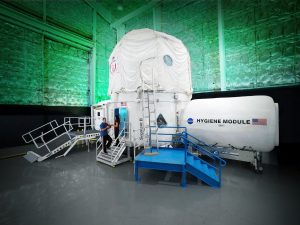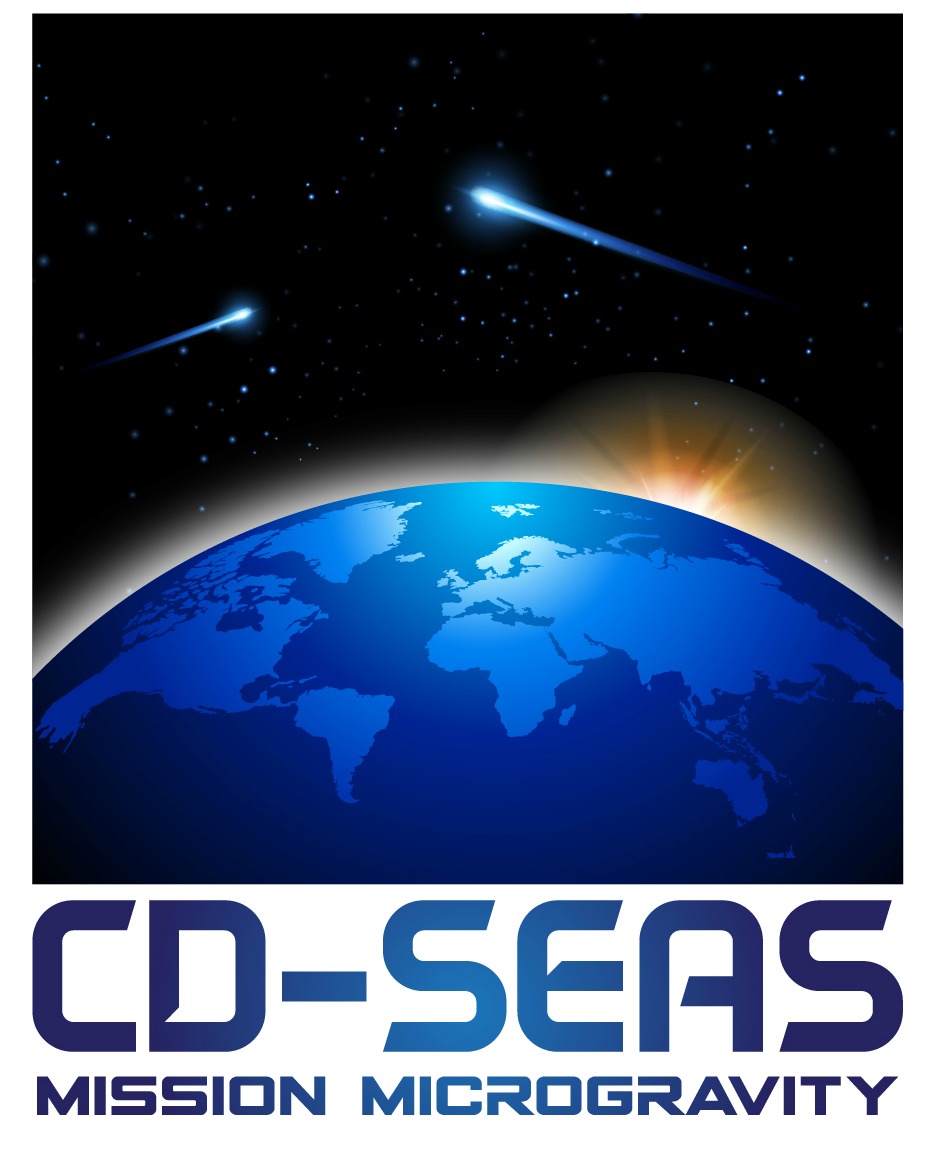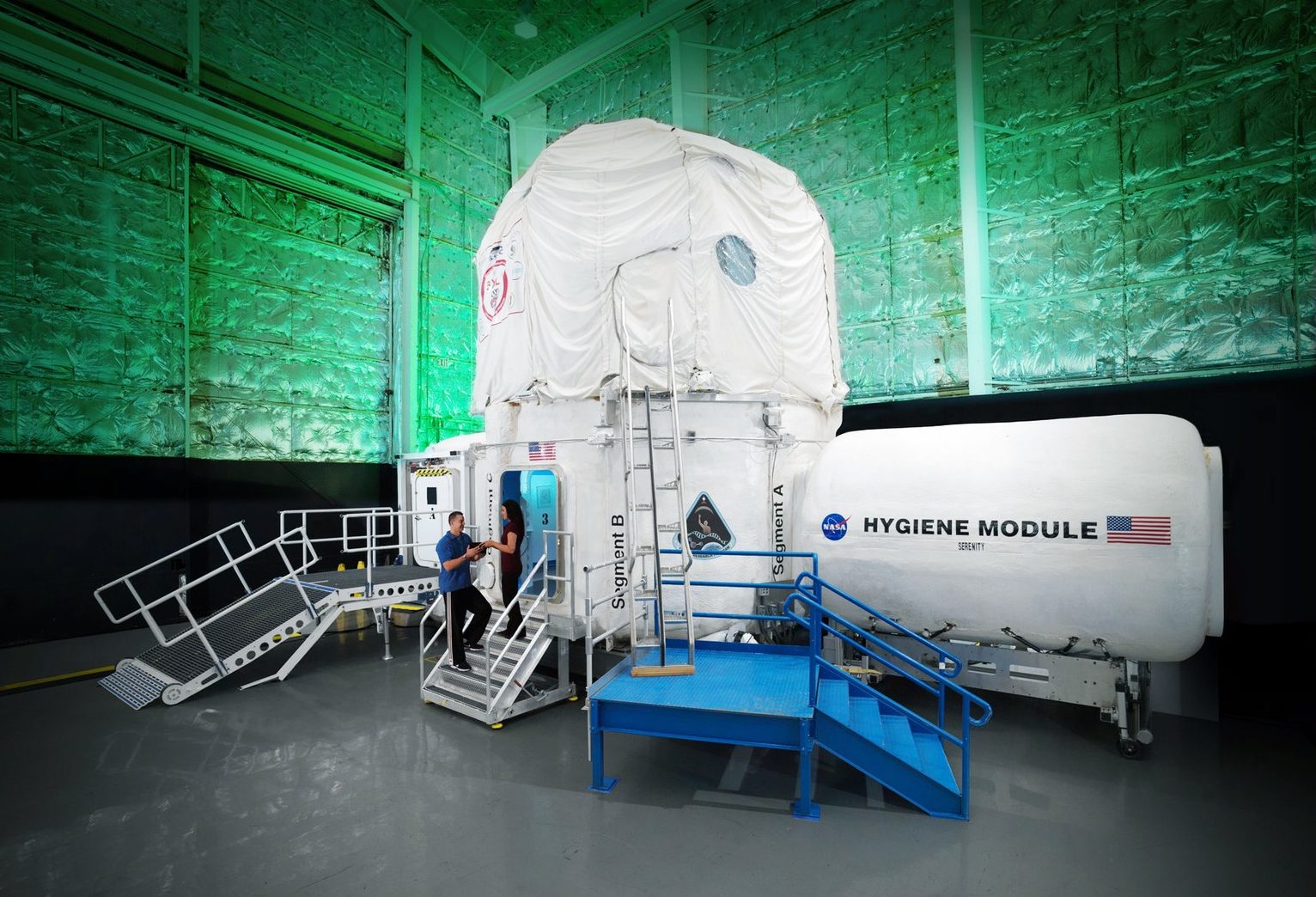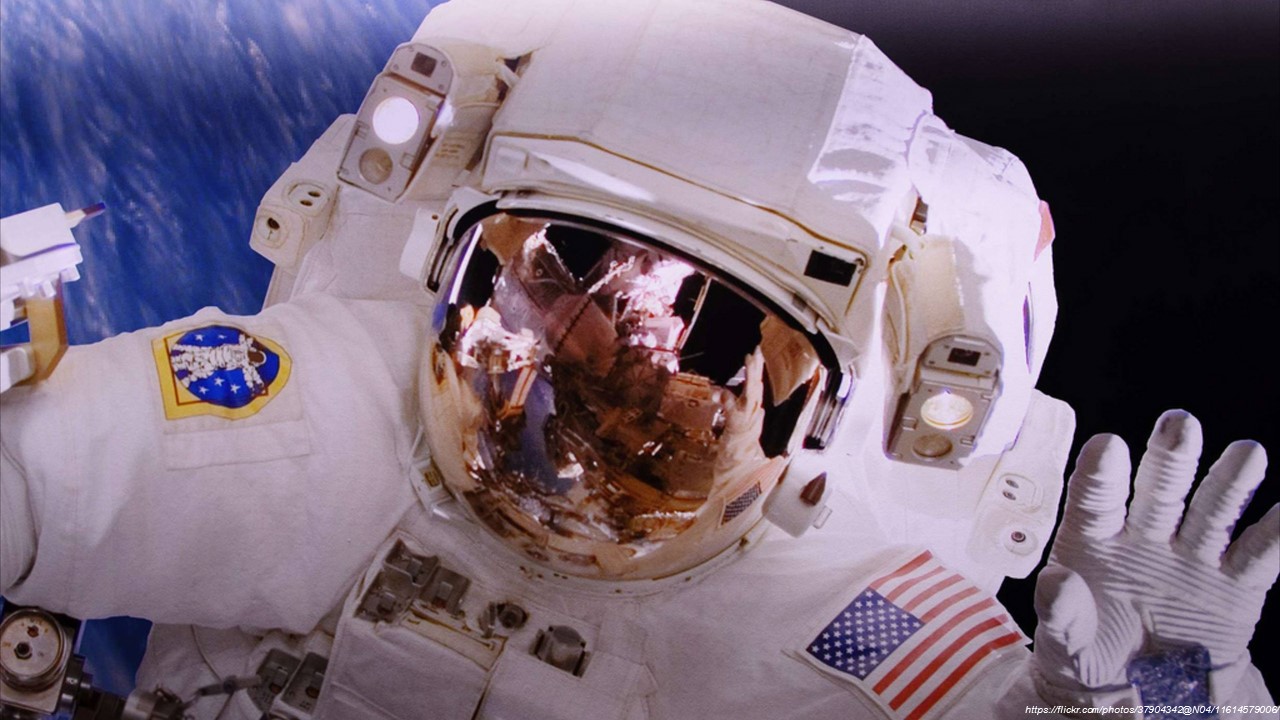Wired.com – How a Champion Powerlifter Became an Astronaut Guinea Pig

The Human Exploration Research Analog module at NASA’s Johnson Space Center. Photo Credit: Bill Stafford/Robert Markowitz/NASA
AUTHOR: Sarah Scoles
JONNA OCAMPO DIDN’T know she wanted to be an astronaut until she moved from Jersey City to Texas. In New Jersey, she didn’t see many stars. Not so in the Lone Star state, which seemed like a misnomer. The skies were full—and below them, in the heart of the space industry, she started meeting people who worked in spaceflight. Flying to space is a thing actual people do, she realized. And maybe she could be one of them.
Since then, Ocampo has trod a tortuous path toward that dream. Right now, she is at NASA’s Johnson Space Center, training for the agency’s 12th Human Exploration Research Analog crew. Starting this Monday, she and three others will spend 30 days inside a three-story habitat meant to mimic one that could someday sit on the surface of Mars. Although crew members and staff aren’t allowed to talk about specific research aims, the recruitment flier said that “researchers will collect blood, urine and saliva; study personal behaviors; and evaluate team cohesion, cognition and communication.” Like other experimental habitats—including Hi-SEAS and the Mars Desert Research Station—HERA aims to isolate people from the terrestrial world and see how they hold up.
Ocampo feels calm and ready, she says, prepared both by her previous spacey experiences and by, you know, life. She started out as a small-town kid and became a dancer and singer, then a world-class powerlifter rightly called one of the strongest women on this planet. She’s done high-altitude training, underwater training, and devised her own medical experiment for a parabolic flight. The diversity of her experiences could suit her not just on this earthbound mission but also far off Earth’s surface.
Mission Training
Ocampo left her rural Pennsylvania home at 17, and, in 1987, enrolled first as a dance major and then a music major at a New Jersey university. It was in New Jersey that she met her husband—and where they both briefly ended up homeless. They found space at the Port Authority, where they took turns sleeping and going out for food with their $100. It was a pretty rocky low point. Craterish.
They climbed back over the lip, though. And the experience has left Ocampo zen about hardship—a quality that lends itself to simulated space missions like HERA. “Once you hit that low point, there’s nothing you can’t do,” she says. “People say, ‘Going into isolation—are you going to have a problem with that?’ I say, ‘No, I will be sleeping on a Tempur-Pedic mattress.’”
There’s a roof, running water. What’s not to like?
Later, she and her husband—a military man—were transferred to Texas. “That’s when I started to get hooked,” she says. The stars, the skies, the people at Johnson Space Center: They pulled her into their orbit. She went back to school, at Brookhaven College, and became a Texas Aerospace Scholar, spending two days at Johnson building a miniature Mars rover and meeting astronauts.

The gravity of her desire grew. She joined the Civil Air Patrol, then applied to be an actual astronaut—three times. She doesn’t take the rejections personally: Last round, NASA received paperwork from 18,300 hopefuls. Historically, applicants have less than a 0.6 percent chance of being selected. That’s even though about 10 percent of applicants are highly qualified, meeting or surpassing NASA’s requirements for a STEM degree, jet-flying experience (for potential pilots), and the “ability to pass a NASA space physical” (space physical!). And, actually, NASA hasn’t announced its latest picks—who knows? “With every successful attempt, I continued to build my resume,” says Ocampo.
She also worked on building her body: Ocampo has always been into fitness, and began entering “figure” competitions in the ‘90s—like pageants for fit people who are cut but not bulky like bodybuilders. Then, surrounded by military people in Texas, she met the US Army powerlifting coach. She had been thinking she wanted a new kind of competition, and to bulk up a bit. Plus, there’s that thing where she likes goals: “Personal courage,” she calls it.
She entered her first competition in 1998. Her husband has been deployed abroad six times—and when he leaves, she uses the alone time to get stronger. She first won Texas’s state matches, then national and world ones as part of the nine-person Team USA. Even though she weighed around 100 pounds, she could heft a large man. “You get into the realm of lifting three times or more of your bodyweight,” she says. “It is like the ant carrying a potato chip across a football field.”
Ocampo has accumulated titles, for lifting and for figure competitions: Miss Figure America (twice), one of the “best 18 bodies in the world,” the third-strongest woman in the world in her class.
The competitions have often required dipping into her “personal courage” reserves. In 2009, she’d been chosen as an alternate for the US team at the Open World Championships in Delhi, India. Five weeks before the event, they called her to fill in. She began training like crazy. And one day after a squat session, she went to the grocery store. Squatting down, casually, to grab some oatmeal, she heard an awful pop. Her leg started to swell above her knee. It was a nightmare tear in her quadriceps.
“I guess you won’t be able to go,” her coach said.
Ocampo refused. She went to Delhi and just pulled her knee wraps extra tight when it was go-time. She won sixth place in the world in her class.
On the Up and Up
But “world” wasn’t big enough. Ocampo wanted to win at the universe, to go out into it. Being strong and fit certainly never hurt anyone’s chances of going to space, but what really changed things was a chance meeting with a guy named Brian Shiro. Her husband had been transferred to Hawaii, and Ocampo had nabbed a job working the sound board at Hawaii Public Radio. One day, Shiro came in to appear on a talk show. “I was working in production for his segment of the show and brought in my pictures of my experience at NASA as a Texas Aerospace Scholar,” says Ocampo.
Shiro was just starting an organization called Astronauts4Hire, meant to make people into attractive astronaut candidates—for NASA or for the coming private space industry.
“Boy, this is really interesting,” Ocampo thought as she listened to him.
She caught him after the show and showed him her photos. Then, Ocampo applied to Astronauts4Hire and became one of the first to join the organization’s ranks, in 2011.

Another Astronaut4Hire members, Jason Reimuller, started something called Project PoSSUM, a suborbital research program to study the upper atmosphere, supported by NASA’s Flight Opportunities Program. Reimuller wanted to train people who can conduct that research in-flight, and his 4Hire colleagues, like Ocampo, were a natural fit. She’s good at the physical parts of hypothetical astronauthood they train for: In the high-altitude simulation chamber, Ocampo was just one of two to make it unimpaired to 23,360 feet. “I thought I would be less than stellar,” she says of the whole qual program, which she finished in February 2015 along with five other Astronauts4Hire. “But it was the first time in my life when things were easy.”
So when Ocampo saw the request for HERA volunteers this year, she felt those cramped quarters call to her. She’s ready for all that invasive biological and psychological testing (and she’s interested in it herself: She recently tested antimicrobials on a parabolic, microgravity flight to see how they held up, and she’s applying to medical school and biomedical research doctoral programs).
Inside the hab, she’ll do all the experiments asked of her during the month-long stay. And she’ll exercise—a lot. “I plan on coming out in better shape than when I went in,” she says.
“Like prison,” I say.
“They have the Yard,” she says. “I have HERA.”
Ocampo isn’t worried about the claustrophobia, the isolation, the boredom, any of it. When people ask her if she’s going to miss any fun foods, she tells them that as long as she has coffee, she’ll be fine. “When you’ve had to deal with having very little,” she says, “you can be content with having above very little.”
It reminds me of a story she told about PoSSUM training. The instructors gave candidates a pair of goggles, blacked over like a spraypainted security camera. Foggles, they called them. Each candidate went into a cage, which then flipped upside-down and descended into a pool of water. The trainers shook the cage around to disorient participants. Underwater, 180 degrees from right, blinded, not breathing, candidates escape like Space Age Houdinis.
It’s supposed to be unnerving. You’re supposed to lose your bearings, left first without sight, then smell and taste, air, direction. Any sound from above comes muffled and fuzzy. But as the sensory inputs disappeared, as the outside world faded and she was left alone with her cage, Ocampo felt increasingly comfortable. She felt her way out and emerged calmly on the surface.



1 Comment
Leave your reply.